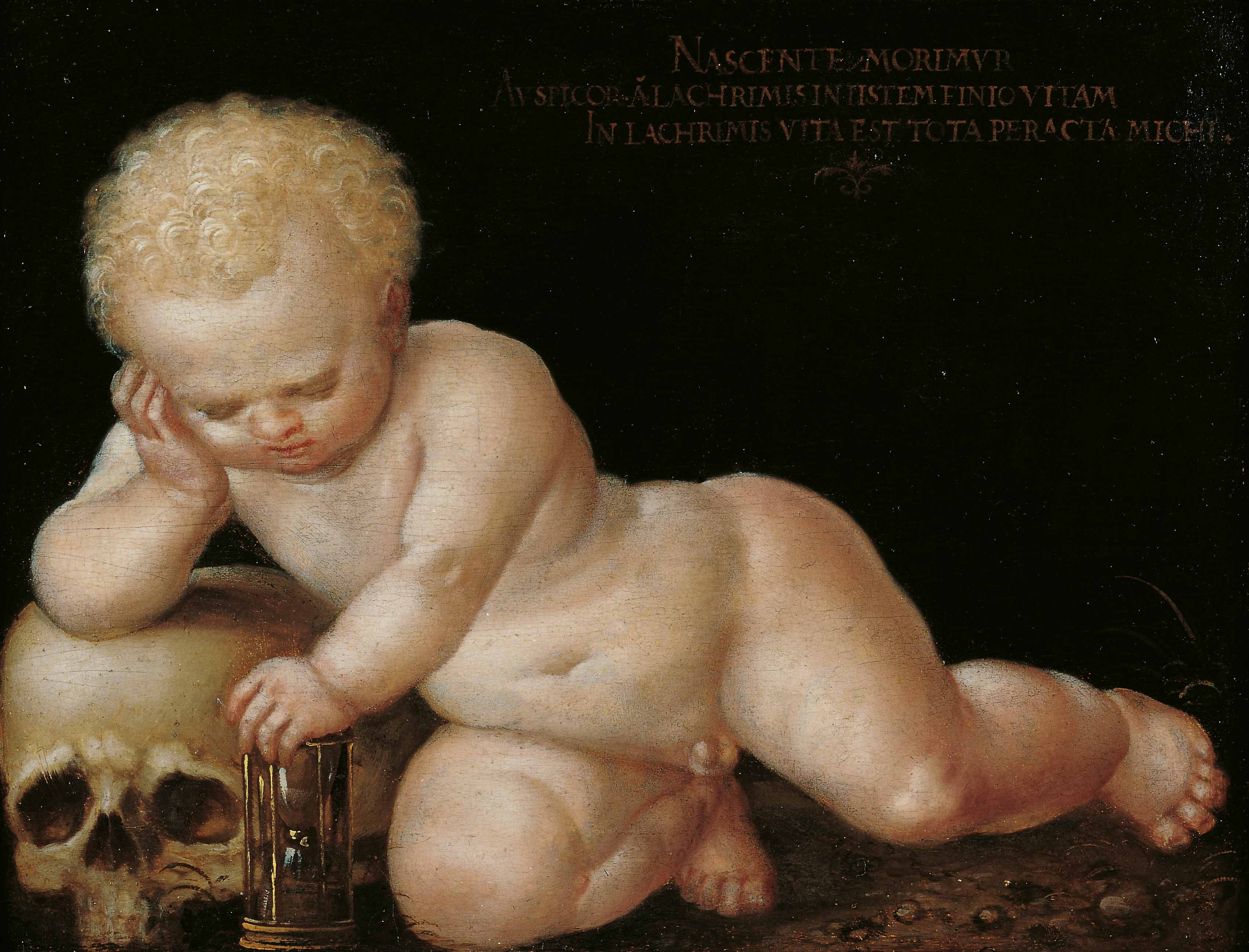
Vanitas with Child and Hourglass
German
16th-17th century, Oil on panel
This beautiful, evocative panel bears an inscription on the verso about human destiny, the literal meaning of which is: 'In being born, we die. I begin with tears, and end my life with them. My whole life is consumed in tears'. The image, which is derived from a Renaissance prototype – a medal engraved by the Venetian Giovanni Boldù in 1458 inspired by classical models – juxtaposes a skull and an hourglass, a symbol of the passing of time, with a robust child, representing the relationship between life and death and the destiny of pain that is the fate of humanity from our birth. In this painting, the child leans on the skull, a formulation seen elsewhere in other such images that circulated widely and were especially popular in Northern cultures. The existence of a 1525 engraving by Barthel Beham, which shows the child with its legs in the same position, leads us to believe that the work is of northern origin and datable to between the end of the 16th and the beginning of the 17th century, as can also be deduced from the draftsmanship and the rendering of the forms in diffused light.

